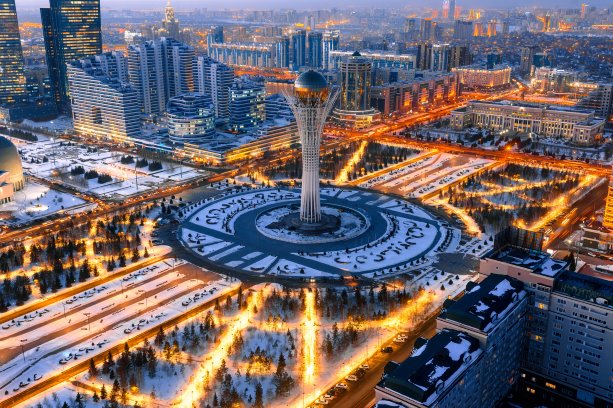Astana, the futuristic capital of Kazakhstan, has been described as the greatest city you’ve never heard of.
Frank Albo, adjunct professor of history at the University of Winnipeg, wants to change all that with his newest book Astana: Architecture, Myth & Destiny.
The volume wraps an exhaustive study of the city around a central puzzle, while drawing attention to some curious inspiration from the great cities of Canada.
Twenty years ago, Kazakhstan’s president Nursultan Nazarbayev moved the capital of his country from Almaty in the south to build a new one 1,000 kilometres away on the barren steppes of the north. Master planned by both Nazarbayev and Japanese architect Kisho Kurokawa, the city design draws heavily from folklore and myth to create a uniquely balanced urban space filled with astonishing architecture.
"Kazakhstan has been hyper-mythologized for thousands of years," says Albo. "For the Greeks, it was the land of the Amazons and Hyperborea, which was a place of neverending renewal, goodness and perpetual youth. If you search Astana on the Internet, you’ll find thousands of websites stating the ludicrous idea that it’s the world headquarters of the Freemasons and the Illuminati.
"I’ve built a niche career as a decoder of buildings and wrote my dissertation on Freemasonry, so this drew my attention to the city about four years ago."
While Albo was preparing a course on utopian cities, including a focus on Astana, he was coincidentally contacted by Manitoba’s protocol officer.
The officer asked him to guide the ambassador of Kazakhstan and his wife on a tour of the Masonic-inspired Manitoba Legislative Building.
"I rather brashly told the ambassador that I knew his nation was using monumental architecture to announce that it had arrived onto the world stage," he says. "But I told him that they were missing something common to all great cities — a foundation myth, a rooted story that ties the architecture together."
Albo volunteered for the job of chief mythologizer and visited the city many times.
The more he explored this "massive Grimm’s fairy tale on steroids," the more mythological symbolism and lore he discovered in the buildings.
"The central building in the capital is called the Bayterek Tower and features a golden egg in its centre, an invocation of the ancient tale of the tree of life and the Sumerian tale of Etana," says Albo. "The Khan Shatyr Mall is the world’s largest outdoor tent and channels a historic Kazakh yurt. As I looked at these buildings I realized that the foundation myth, which I both decoded and encoded, offered a solution to what I see as the three greatest threats of the 21st century."
He notes that Astana has demonstrated its commitment to planetary sustainability as home of EXPO 2017, which exemplifies the future of energy; religious tolerance with a glass pyramid meeting place named the Palace of Peace and Reconciliation; and to nuclear non-proliferation by decommissioning the massive nuclear arsenal it inherited from Russia.
The city replicates some of the best design ideas from the great cities of the world.
"Canada’s contributions include a nod to Toronto, which the planners felt had the perfect curb-to-street ratio," says Albo. "Perfect for clearing snow. In Ottawa, they looked at the Rideau Canal as a model to create a wonderful promenade along their own Ishim River."
Albo’s book is both a rigorous academic history of Astana, an exploration of myth and metaphor and a collection of dazzling photographs. He’s also placed a secret message inside the book. The first person to successfully decode the exact message, word for word, will receive a golden ticket — an all-expense paid trip to Astana (see astanamyth.com).
Albo says he hopes that the example set by Astana will also inspire Canadians to draw from their own cultural heritage in designing new architecture.
"Myth is essential to human identity," he says. "Canada’s own cultural heritage provides rich inspiration for that."





Recent Comments
comments for this post are closed